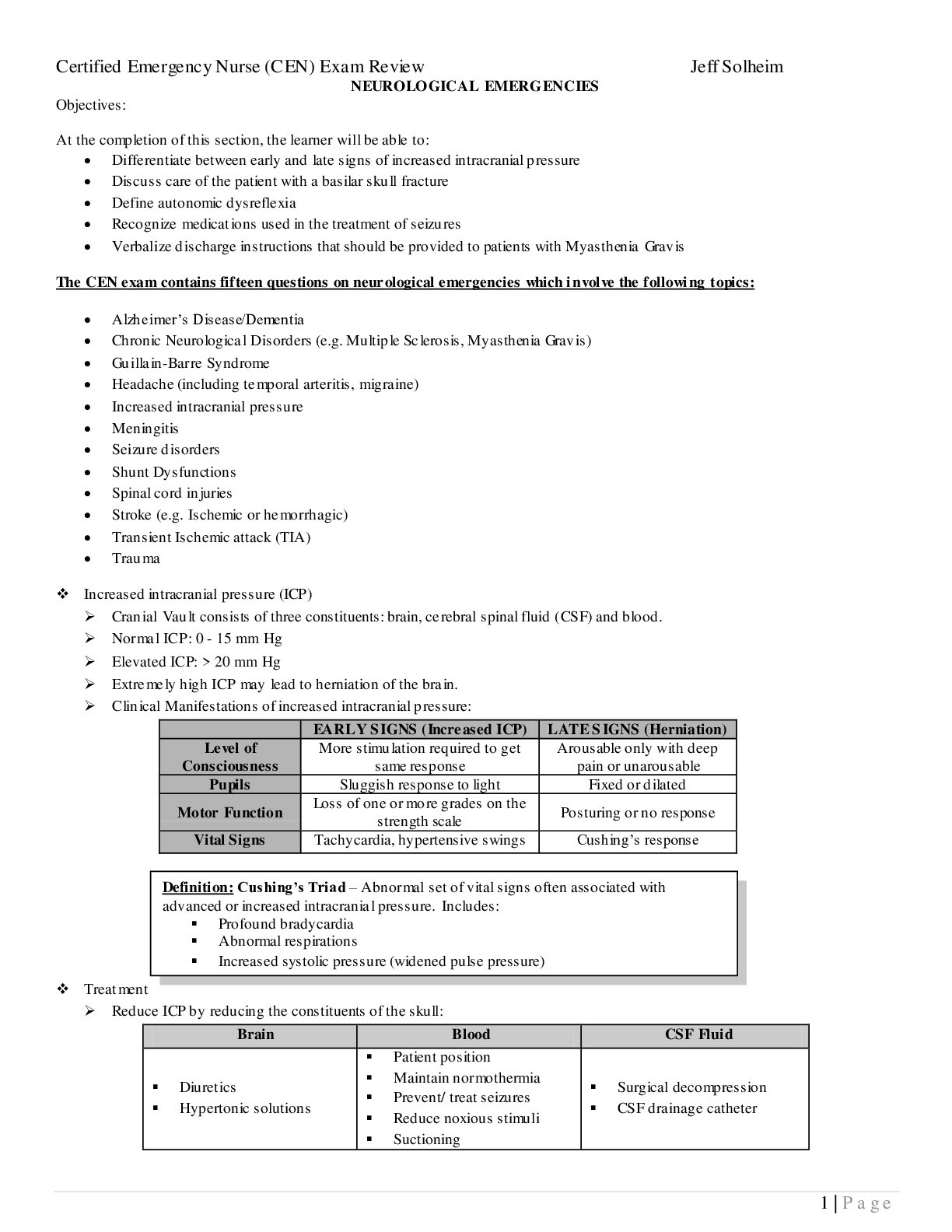All study resources > CEN7_Neurological Endocrine (Nursing)
CEN7_Neurological Endocrine
NEUROLOGICAL EMERGENCIES
Objectives:
At the completion of this section, the learner will be able to:
Differentiate between early and late signs of increased intracranial pressure
Discuss care of the patient with a basilar skull fracture
Define autonomic dysreflexia
Recognize medications used in the treatment of seizures
Verbalize discharge instructions that should be pro
...[Show More]
NEUROLOGICAL EMERGENCIES
Objectives:
At the completion of this section, the learner will be able to:
Differentiate between early and late signs of increased intracranial pressure
Discuss care of the patient with a basilar skull fracture
Define autonomic dysreflexia
Recognize medications used in the treatment of seizures
Verbalize discharge instructions that should be provided to patients with Myasthenia Gravis
The CEN exam contains fifteen questions on neurological emergencies which involve the following topics:
Alzheimer’s Disease/Dementia
Chronic Neurological Disorders (e.g. Multiple Sclerosis, Myasthenia Gravis)
Guillain-Barre Syndrome
Headache (including temporal arteritis, migraine)
Increased intracranial pressure
Meningitis
Seizure disorders
Shunt Dysfunctions
Spinal cord injuries
Stroke (e.g. Ischemic or hemorrhagic)
Transient Ischemic attack (TIA)
Trauma
Increased intracranial pressure (ICP)
Cranial Vault consists of three constituents: brain, cerebral spinal fluid (CSF) and blood.
Normal ICP: 0 - 15 mm Hg
Elevated ICP: > 20 mm Hg
Extremely high ICP may lead to herniation of the brain.
Clinical Manifestations of increased intracranial pressure: EARLY SIGNS (Increased ICP) LATE SIGNS (Herniation) Level of Consciousness
More stimulation required to get same response
Arousable only with deep pain or unarousable Pupils
Sluggish response to light
Fixed or dilated Motor Function
Loss of one or more grades on the strength scale
Posturing or no response Vital Signs
Tachycardia, hypertensive swings
Cushing’s response
Treatment
Reduce ICP by reducing the constituents of the skull: Brain Blood CSF Fluid
Diuretics
Hypertonic solutions
Patient position
Maintain normothermia
Prevent/ treat seizures
Reduce noxious stimuli
Suctioning
Surgical decompression
CSF drainage catheter
[Show Less]
